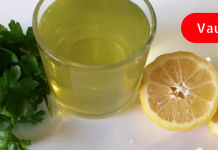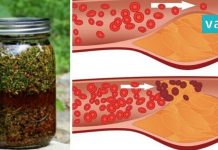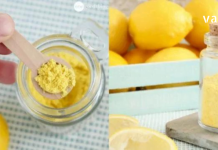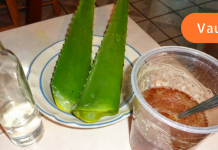For years, every time I caught a cold, I would suffer from unbearable pain in the forehead and around the eyes. It felt as though my entire face was under pressure, and the pain would radiate deep into my eye sockets.
The pain was so intense that during those episodes, I was practically bedridden. I couldn’t do anything — even lifting my head from the pillow felt impossible. The throbbing in my sinuses was relentless, and over-the-counter painkillers did little to help. Every winter, it was the same story, and I felt completely powerless.
Then, one day, something unexpected happened. My mother-in-law heard about my suffering and decided to help. She went through an old chest and pulled out a traditional home remedy book — a collection of treatments passed down from her mother and grandmother. To be honest, I had already given up hope and didn’t expect much. But I didn’t want to offend her, so I agreed to try her recommended remedy.
To my surprise, it worked — and not only did it work, but the pain that had haunted me for years hasn’t returned since. I want to share that method with you, in case it might help someone else struggling with the same problem.
Here is the remedy:
Start by collecting seed pods from the acacia tree. Remove the seeds and dry the pods completely. Once they are thoroughly dried, grind them into a fine powder. Use this powder like snuff — gently inhale it through your nose. You may sneeze, but that’s actually part of the healing process.
For a more intensive treatment, you can dissolve a pinch of this powder into a penicillin solution. Using a dropper, place just one drop into each nostril — once per day. Be warned: this part is quite painful, but it’s effective. The intense sneezing that follows helps to clear the accumulated pus from the sinuses, relieving the pressure and pain.
In addition to this, make it a routine to inhale warm steam in the evenings. This helps to soften and loosen the mucus in your sinuses. You can also rinse your nose with a saline solution or with a mild herbal infusion made from calendula and chamomile. These herbs are known for their anti-inflammatory and soothing properties.
It’s also important to keep your sinuses warm. During sinus infections, moderate heat is therapeutic. Wear a scarf not only when you go outside, but even at night while you sleep. Keeping your head and face warm can significantly reduce sinus discomfort and prevent further inflammation.
Here is another powerful home remedy that worked wonders for me:
Take two tablespoons of watercress (use dried leaves in winter and fresh in summer) and mix them with two tablespoons of vegetable oil. Place the mixture into a small pot, seal it tightly with a lid, and simmer it over very low heat for 40 minutes.
After cooking, remove it from the heat and let it cool for two hours without opening the lid. Once cooled, strain the mixture and store the liquid.
Before using this oil, warm the sinus area by placing a small cloth bag filled with heated salt over your forehead and nose — this helps open up the sinus passages. After warming, apply 3 to 4 drops of the oil into each nostril.
This treatment should be done twice a day, ideally in the bathroom over a sink, because a large amount of discharge will begin to flow from your nose shortly afterward. In my case, only five treatments were enough — after that, I completely forgot what sinus pain even felt like.
This article is based on a method featured in the book “2000 Herbal Healing Remedies” and reflects real personal experience. Natural remedies, when used wisely and responsibly, can often succeed where modern medicine falls short.


















